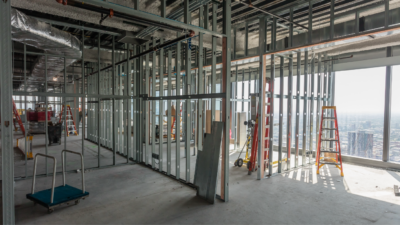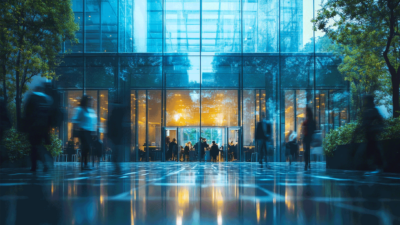In this article, we examine the current context of the U.S. office market and highlight the key performance indicators in the first quarter of 2020.
The U.S. office market posted a subdued first quarter. There was a slight increase in vacancy, while absorption fell, and rents posted marginal gains. Construction fell slightly but remains elevated. Suburban markets continue to see the greatest share of capital being placed.
Looking ahead, the COVID-19 pandemic has created a climate of uncertainty. Decision making will largely be put on hold, impacting both leasing and acquisition/disposition activity.
A clearer picture will emerge as we move through the second quarter, which will be the initial quarter to be fully impacted by the pandemic. A key factor will be the extent to which business confidence returns in the second half of 2020 and whether this will be in the context of a new pricing climate — both in terms of rents and capital values.
Vacancy Increases Marginally
- The U.S. office vacancy rate increased marginally in Q1 2020, rising by 10 basis points to 11.5%. Despite this increase, vacancy has now been below its historic average for 21 consecutive quarters.
- Central business district (CBD) vacancy rates rose by 20 basis points in Q1 2020 to 10.2%, while suburban levels held firm at 12.2%.
- Major and mid-tier metros with the lowest vacancy rates include Nashville, Orlando, Portland, Raleigh-Durham and the San Francisco Bay Area.
Rents Inch Upwards
- Average Class A CBD office asking rates grew by 0.4% in Q1 2020 to $50.95 per square foot, while suburban rents rose by 0.9% to $31.85 per square foot.
- Over the past 12 months, 13 CBD markets saw Class A asking rents rise by more than 5%, led by Atlanta, Detroit and Palm Beach.
- In the suburbs, 11 markets saw Class A rents rise by more than 5% over the same time period. Charlotte, Minneapolis and Salt Lake City were among the leaders.
Absorption Falls but Stays Positive
- U.S. office absorption fell in Q1 2020 to 5.8 million square feet, down from 12.3 million square feet in the prior quarter.
- CBD markets accounted for negative 1.3 million square feet of the Q1 2020 net absorption total, with 7.1 million square feet occurring in the suburbs.
- Markets with strong positive absorption in Q1 2020 included Atlanta, Orlando and Seattle.
Construction Remains Elevated
- The amount of office space under construction in the U.S. fell from a record 161.1 million square feet in Q4 2019 to 158 million square feet in Q1 2020. Construction peaked at 125.2 million square feet in the prior cycle.
- With COVID-19 putting many commercial construction projects on hold, delivery times are being reviewed.
- Development activity is led by New York and the San Francisco Bay Area, which both have more than 20 million square feet underway.

Suburban Markets Lead Sales Activity
- Average capitalization rates (cap rates) stand at 6.5%, 10 basis points lower than one year ago.
- CBD cap rates fell by 10 basis points over the same time period to 5.3%, while suburban cap rates fell by 20 basis points to 6.7%.
- Sales volume in Q1 2020 totaled $29.4 billion, up by 3.6% on a year-over-year basis.
- Investors continue to favor suburban assets, placing $17.4 billion in the first quarter, compared with $11.9 billion in CBD locations.
For more insights, stay tuned for our Q1 2020 Top Office Markets Report and our full Q1 2020 Office Market Outlook Report, both to be published soon.
About the Author:
Stephen is the National Director of Office Research for Colliers International, where he focuses on analyzing office property trends, compiling Colliers’ thought leadership and delivering timely market projections to provide clients with a leading edge in our industry.

 U.S. National Research
U.S. National Research
 Gary Gottlieb
Gary Gottlieb Darren Lemmon
Darren Lemmon Phil Breidenbach
Phil Breidenbach Marianne Skorupski
Marianne Skorupski Michael Lirtzman
Michael Lirtzman

 Aaron Jodka
Aaron Jodka